“Since day one, I was fascinated with the movement of color, the experience of Carnaval in the street…The dancing, it was born with me. Mama said I was probably dancing in her tummy.”
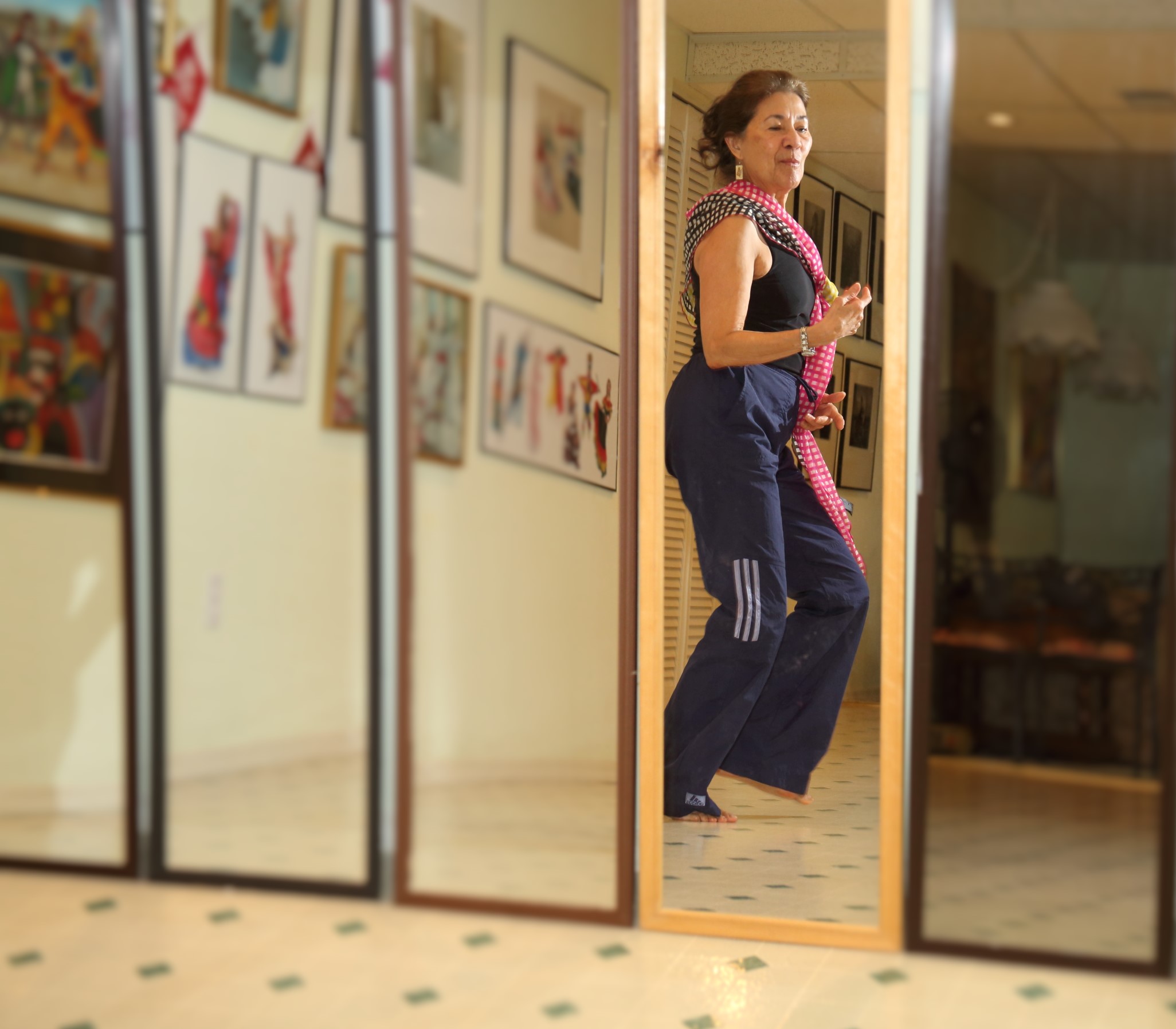
The culture of dance, the Carnaval, coastal life and Colombia—those are the happy memories from Carmen Dence’s childhood that continue to bring her joy.
Dence, who has called St. Louis home for four decades, was raised as the eldest of six children in Barranquilla, a large port city on Colombia’s Caribbean coast.
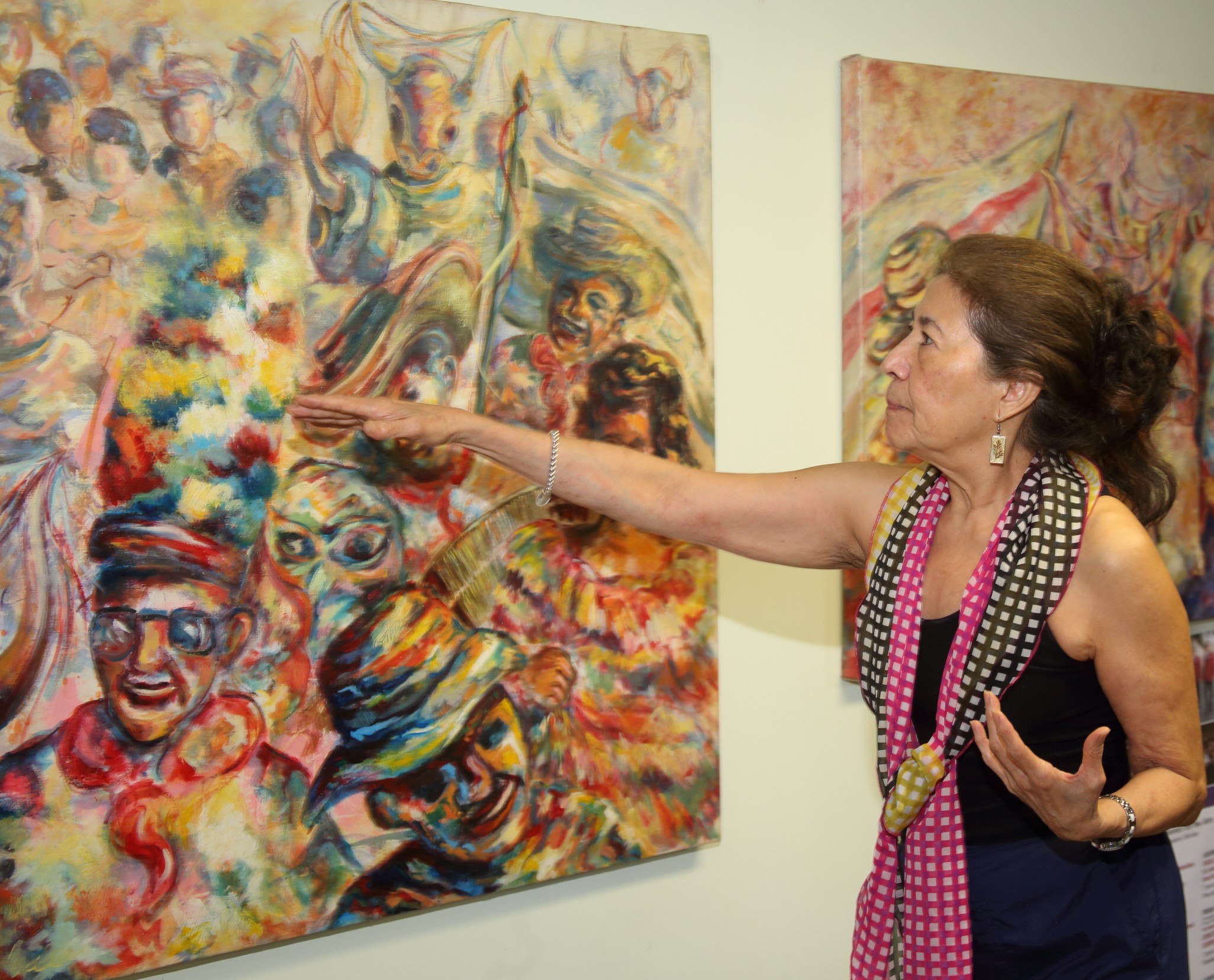
“Since day one, I was fascinated with the movement of color, the experience of Carnaval in the street,” she said, referring to the Carnaval de Barranquilla, one of the biggest of its kind in the world. “The dancing, it was born with me. Mama said I was probably dancing in her tummy. The idea of putting on a show was there with me at 7 or 8 years old. I was already creating dances, having my brothers and sisters be a part of it, and putting on a show for the neighbors.”
Aside from dance, Dence had another deep-seated interest that developed in her high school years: chemistry.
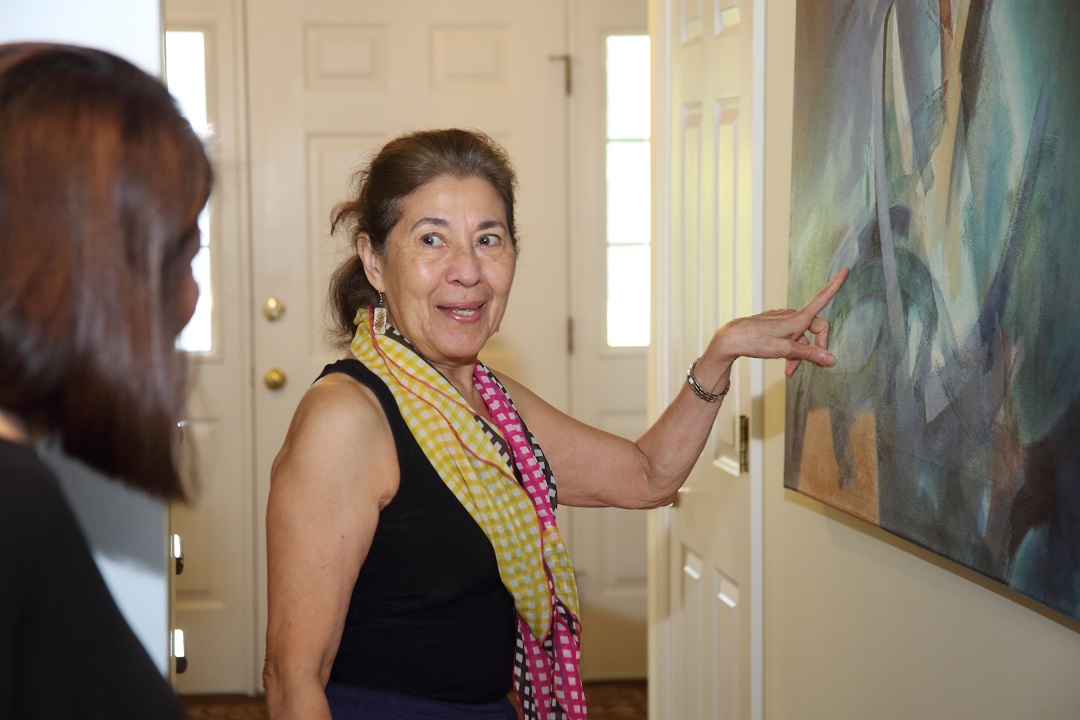
“My family was very low middle class, we had no big money for anything. But education and school were very important,” she recalled. “When I finished high school in Barranquilla, I had to go to the university in the city—there was no money to send me to other schools. I finished my degree as a pharmaceutical chemist, but deep in my heart, what I wanted to study was organic chemistry,” she said.
In the 1960s, opportunity came knocking in the form of a scholarship to Florida State University, allowing her to pursue a degree in organic chemistry. But maybe there were some other unknown forces that steered her to that particular university, for it was there that she first met Joseph Dence, an assistant professor in chemistry from Ohio. While their relationship was strictly academic at the time, the two reconnected seven years later, when Dence was working at a lab in Ohio, after receiving her post-graduate degree from Purdue University. From there, the trajectory of her life took off in the most unexpected way, and all she could do was hang on for the ride.
“Joseph had gotten a contract job at the Abadan Institute of Technology in Iran, and we continued the relationship when he left for Iran,” Dence explained. “I bought a round-trip ticket to see him…and three months later, we got married!”
The nuptials, which required two wedding certificates, took place in a small church, with only a handful of people in attendance.
“It was a tremendous and exciting time in our lives,” Dence recalled. “The wedding was no more than $120. I got married in an outfit I made myself. The pastor and his wife and the gardener and his wife were the witnesses. We had a nice dinner, and came back to our beautiful apartment—it was simple, but it was just like heaven to us.”
After almost two years of living and working in Iran, the newlyweds decided it was time to go.
“Something started to change…the Iranian Revolution…the Shah fell… With the Ayatollah Khomeini, the Iranians were suffering a lot,” she explained.
From the Middle East, the couple headed to the Midwest to St. Louis, where Joseph already had a working relationship with Washington University.
“I didn’t even know about Wash U then,” Dence admitted. “But the Cardinals were here—I was enamored by baseball. I also found St. Louis to be a very accommodating place. There was nothing but plusses for us to stay here.”
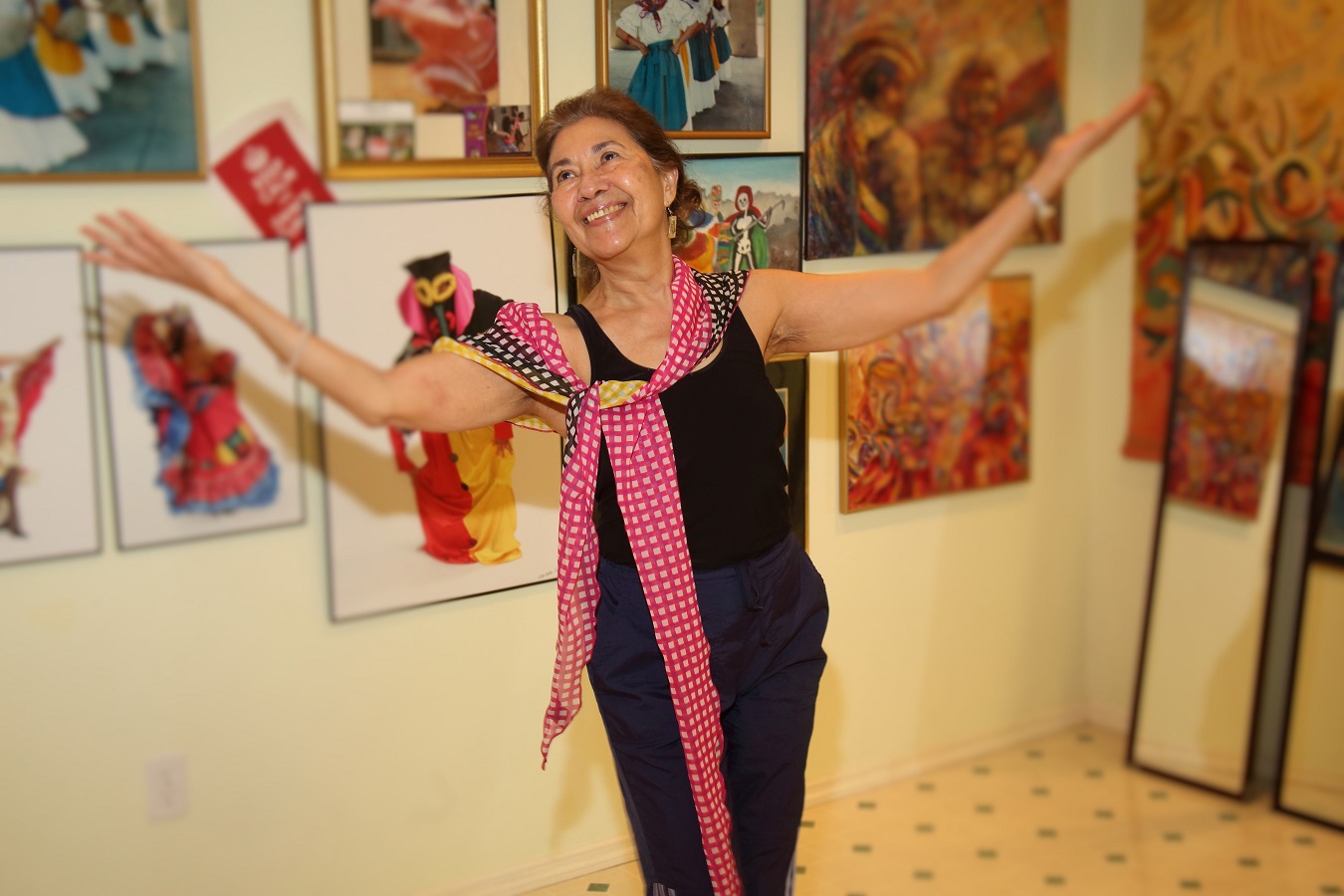
Within a week, both were employed at Washington University—he, in internal medicine; she, in pharmacology. And following a career that lasted 37 years, Dence retired four years ago as associate professor of radiology at Washington University.
Despite the demands of her role at the university, Dence never sacrificed her passion for dance, particularly, the traditional Colombian dances she loved as a child.
“It began with my own curiosity to explore the origins of the movement—the importance of blending all these cultures from the coast and combining that with cultures from other towns and cities in Colombia, where there are more indigenous people. Look at my face, I don’t look European, I look more indigenous. It’s a tri-ethnicity that’s part of who we are back home. The culture, the dances, the movements, the costumes—all that was just inseparable, it all felt very natural,” she said. “Dance and music—certainly, for me, are a unifying force to break any barriers! Dance and music take us beyond the color of our skin, age, geographical location, religion and silly politics. We become aware of our similarities more than our differences.”


It is with this belief that she founded Grupo Atlántico in 1995.
“It started with the idea of bringing to St. Louis the more specific dances of the northern and Caribbean side of Colombia, but it meshed into representing the cultures of other Afro-influenced Central and South American and Caribbean countries. There are lots of traditional dances that we perform and I have choreographed, including cumbias, bullerengues, gaitas, puyas, salsas, etc.,” Dence explained. “It’s a source of joy and fulfillment—seeing the enthusiasm, fast progress and dedication of these students keeps me motivated to up my skills and knowledge of the traditions by doing the necessary research, attending conferences and interacting with other devotees to dance!”
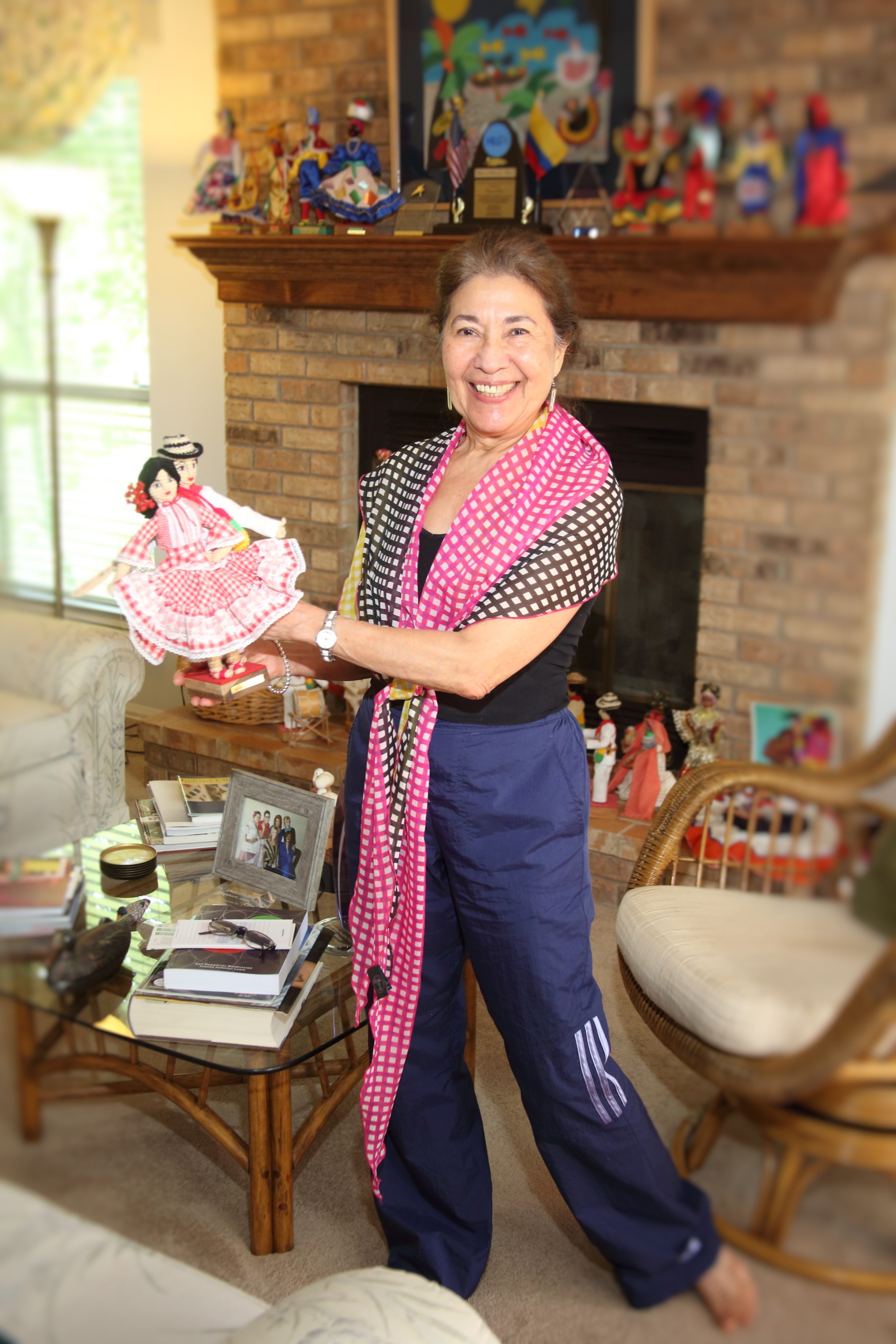
A diverse group of about 25 students, ranging in age from 8 to 85, attend twice-monthly classes in Dence’s basement studio, where she also stores several closets full of costumes she made by hand.
“Each dance has its own variety of costumes, guided by its history, style, colors, skirt fullness, etc.,” she noted. “There are lots of creative freedom in their design, which is great.”
Another way she stays firmly connected with her roots is through family. She and Joseph have been married for 43 years. And she remains close with her siblings, and nieces and nephews, who are all over the world, including a sister, Marena, who is an artist and whose paintings—strongly influenced by Colombia’s coastal and Carnival scene—are displayed throughout the Dences’ home.
“My siblings and I have wonderful relationships among the six of us. We lost our mother at 94, she lived a very long life, she was the matriarch of the family. Somehow, that role has been passed on me,” she beamed. “They call me ‘Mama Micha,’ it feels like a wonderful gift—it makes me happy.”





